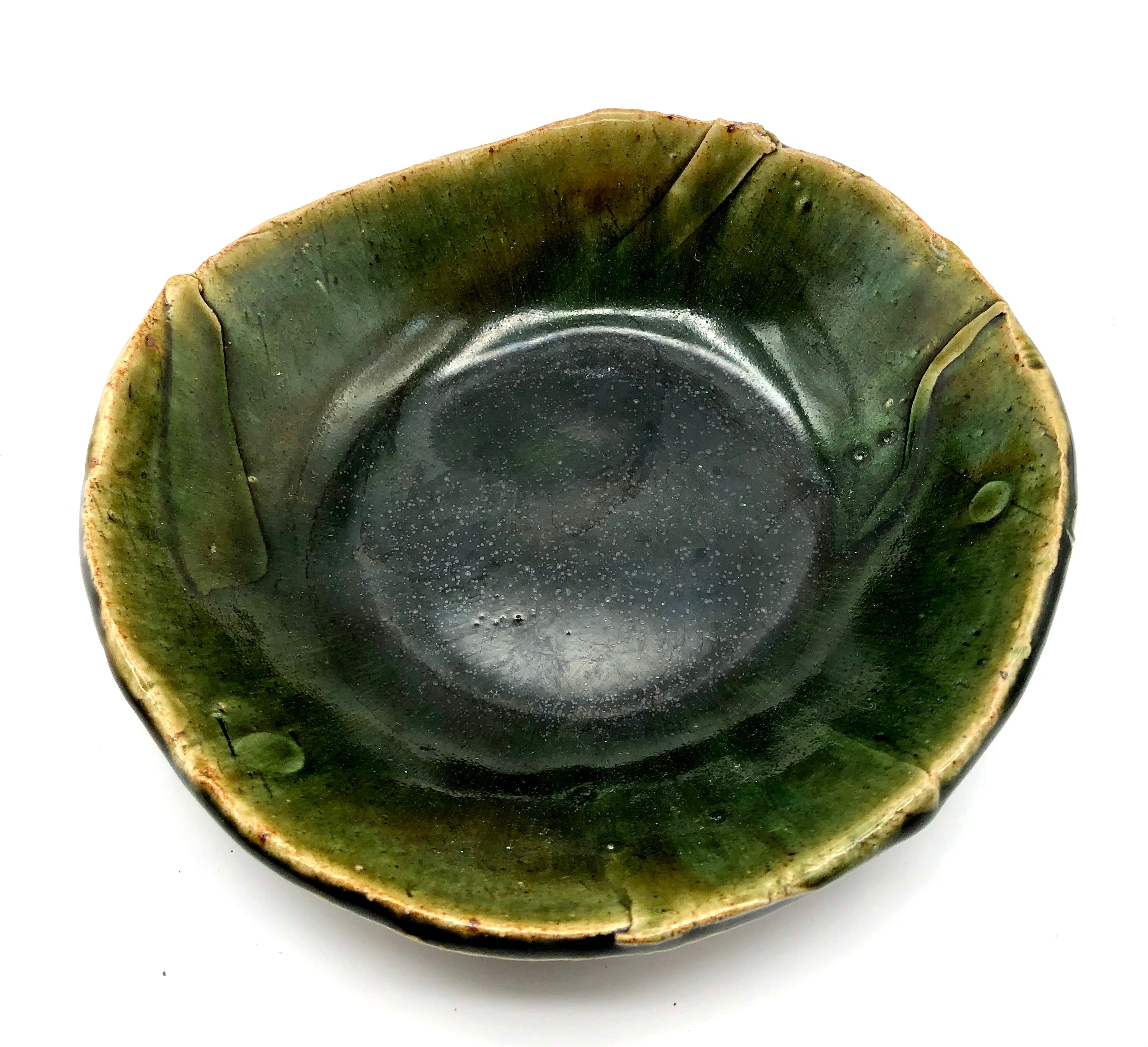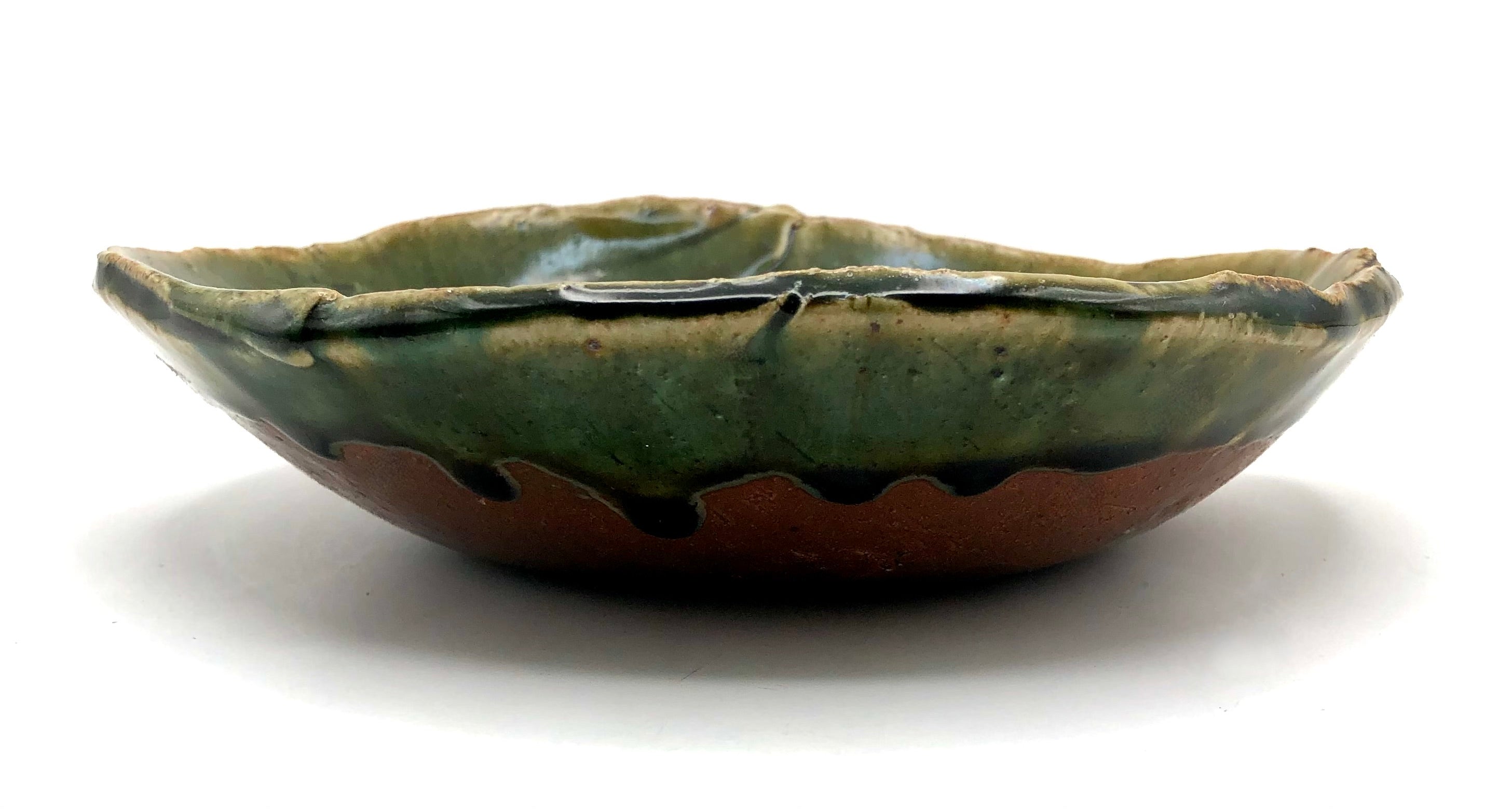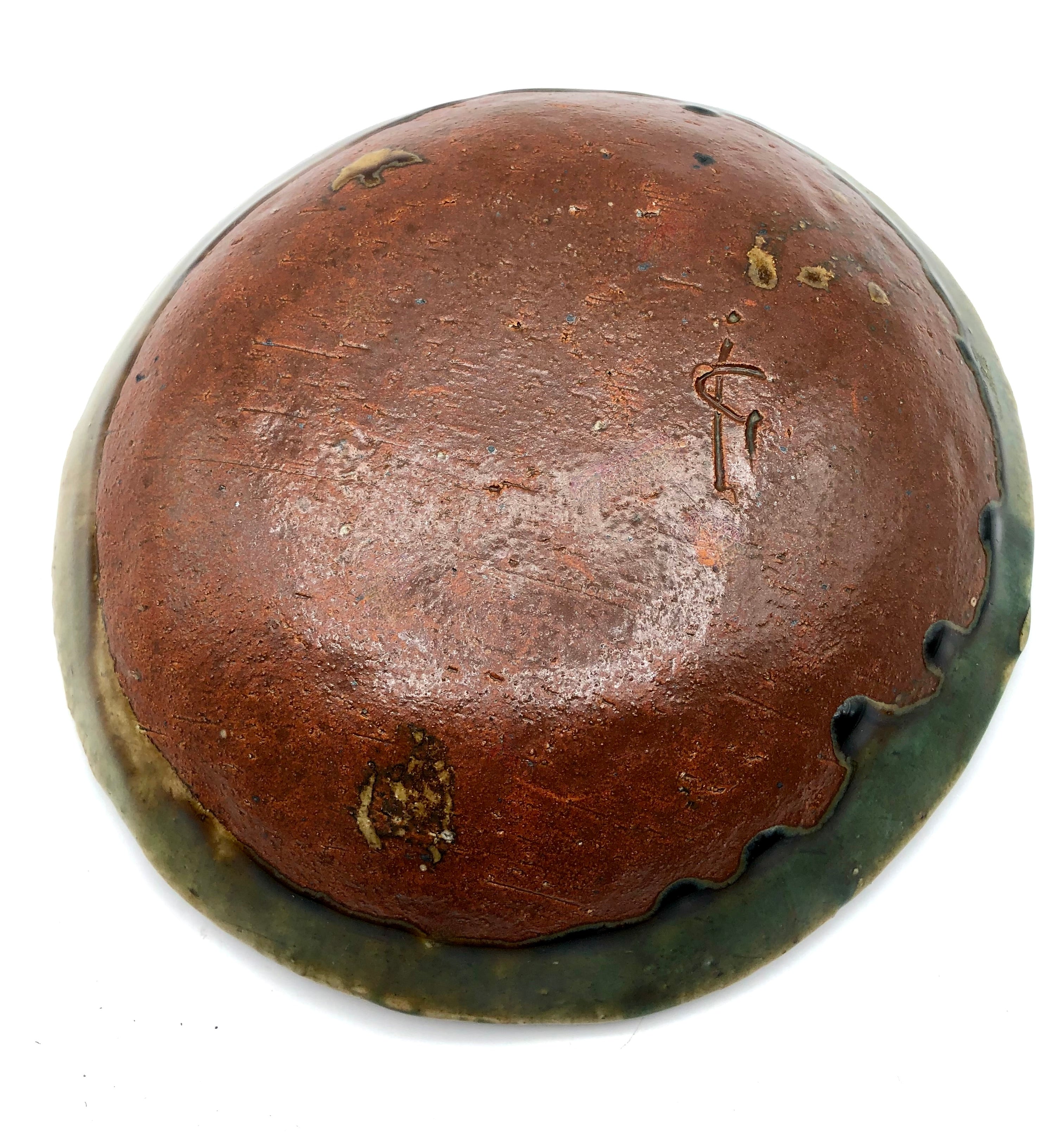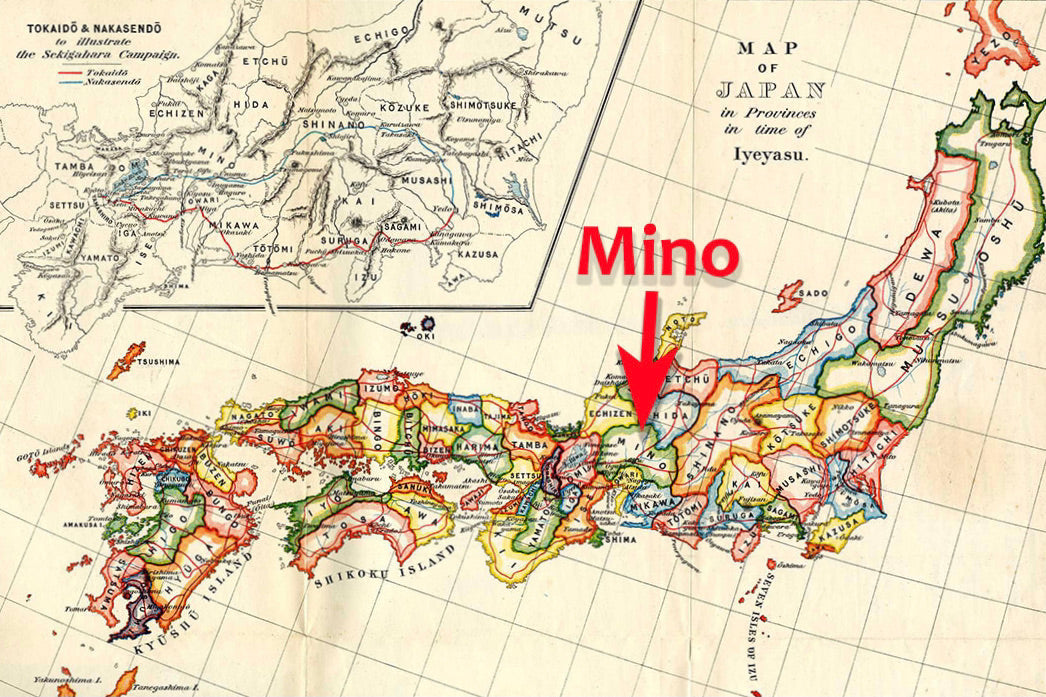



Vintage Japanese Mino/Oribe Yakimono Bowl | Vintage Japanese Tea Kaiseki Mukozuke Serving Piece
Dimensions: 2-0”h x 7-1/2” dia.
This wonderfully free formed Yakimono creation from Mino (also known as Oribe-yaki) which is a deep serving bowl is a perfect example of Oribe pottery of this era being bold, playful and abstract. It is hand-formed and incorporated surface paint layers of green copper glazes subtile abstract forms all of which was probably the first colored stoneware glaze of this period. The concave bowl with an undulating freeform lip affording a wonderful tactile experience. The base of the dish shows a mottled brown glazed clay and an untranslated artist's insignia.
This piece is included in the definition of Kaiseki-Mukozuke, which was one of the most frequent uses of ceramics in the Mukozuke course of eating, certainly the first the guest to see, and a dish used to hold something special. Tea people for the sake of entertainment and visual excitement enjoy contrasting objects used in the ceremony. In this case the ceramicist has greater freedom to move the clay, carving, molding, and manipulating to result in interesting shapes showing the unbridled imagination of the Mino potters which include the assemblage of distinctly different ceramic finishes. And finally, the color in Mukozuke is an important consideration in relation to the food served. There is also the thought that one wants to incorporate the entire range of a creative experience, and is considered a classic style of Japanese aesthetics and captures the spirit of the wabi tea ceremony.
Condition: Excellent condition as originally formed. No imperfections with a wonderful “hand” to the touch.
NOTE: Mino Oribe is a visual style named after the late-16th-century tea master Furuta Oribe,(1544-1615) who was a warrior who once served Toyotomi Hideyoshi and Oda Nobunaga. He became the foremost tea master when his teacher Sen no Rikyu perished. It’s most often seen in pottery, but extends to textiles and paintings. Oribe was not an actual potter, but (like many other influential figures in Japan’s art history) something akin to an art director or designer. He embodied the spirit of wabi tea so completely that he was able to give it form in a truly new and unique vision. The motifs, taken from nature or other decorative patterns such as textiles, were ground-breaking in their bold informality. It must have been this recognition of a new Japanese aesthetic that caused tea devotees to cherish Oribe ware. Its ability to capture something of the artistic and spiritual soul of Japan quickly spread throughout the country, and its mass popularity continues to this day.
